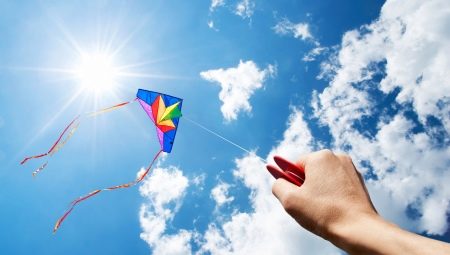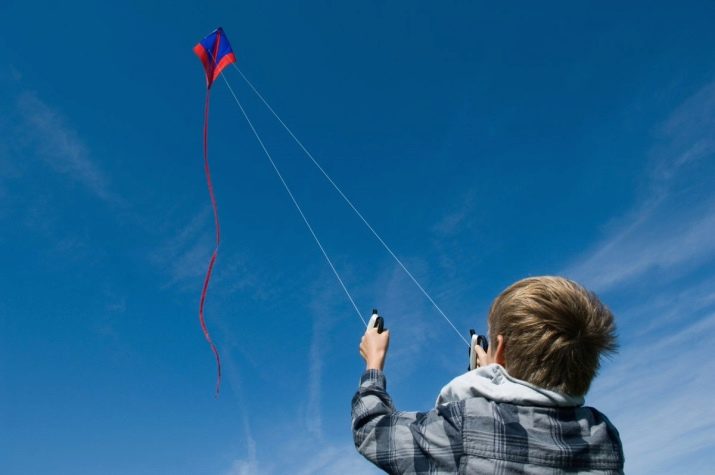How to fly a kite?

The tradition of making paper products and launching them into the air originated in ancient China. Today it is a great pastime for people of all countries, children are especially willing to do this. This article will show you how to fly a kite, how to fly it and what precautions you need to take while doing this.


Best weather to run
Without wind, it will not be possible to move the paper structure, because it is not for nothing that in this case we are talking about an air structure. The smoothness and evenness of the glider flight depends on the features of the movement of air masses, on their strength and direction.
You need to know that in calm weather it will not be possible to launch the air structure, and with strong gusts, beginners will not be able to cope with control.
It is best to ask about the wind speed parameters and, taking into account your skills and experience in this matter, make decisions.
For beginners, it is recommended to practice flying a kite with a gust of wind of 3-6 meters per second. The best speed at which a paper structure can be controlled in the air is considered to be 6-8 meters per second. But if the wind gusts are from 8 to 14 meters per second, this is already an occupation for specialists and professionals.

A strong wind can break the glider, confuse or even break the line. You can navigate by tree branches and swaying grass. When the plants tilt slightly, and small ripples form on the river, then the apparatus can be started.
The direction of the air flow is also important (it is easy to determine by the way the trees bend), as well as the position of the standing. During the flight, the kite must resist the wind, so the manager of the structure must stand with his back to the direction of the wind.

If the weather is right, you can fly a kite in winter. Only in this case, you need to choose a not very snowy meadow, so that it is more convenient to move around.
However, the choice of location for such a pastime must be taken with full responsibility at any time of the year.

Seat selection
The terrain for launching paper structures into the air is as important as the strength and direction of the wind. Usually the following sites are chosen:
- plains without grooves or other obstacles;
- small elevations in the form of hills or embankments;
- wide clearings, areas where there are no buildings, trees and other obstacles.
It is important that nothing gets in the way under your feet, since when the air glider is launched, a person will focus on flight control, all the time he will look up.


Therefore, it is important to choose not only the right moment for the weather conditions, but also the right location.
In the end, your own safety depends on the choice of location. It will be a shame to stumble at the most inopportune moment when you just started enjoying the process. And for the flight of your "bird" to be beautiful, you also need to learn how to launch and control the aircraft.


Instructions
It is quite easy to properly launch a DIY kite or a Chinese finished design if you follow the instructions. It all depends on the complexity of the apparatus: it is made simply - with one coil, or it is a more complex mechanism.
Launching
In any case, it is more convenient to launch the glider with an assistant. Here's how to proceed when the two of you are together:
- One, holding the kite, directs its bow upward.
- The other should unwind 20-25 meters of the rope and step back, turning his back to the direction of the wind.
- The launcher gives the assistant the command to quickly throw the glider, and he himself takes control of the apparatus by adjusting the length of the thread and its tension.

If you have to enjoy this activity alone, then when starting up, do the following:
- Choose a position with your back to the wind.
- Hold the glider perpendicular to the ground, facing you.
- Take 8-10 steps back, unwinding the line, then sharply pull the thread and start running against the wind flow.
- When the aerial structure reaches the required height, go to steps and take control.


Do not forget to check the integrity of the product before starting the start-up.

Control
The flight mainly depends on the strength of the air flow and the direction of the wind, but the uniformity of movements depends on the actions taken by the controller from the ground. You can watch the kite at a distance of 30 to 60 meters upward; it is not recommended to let go of more handrails.

If you notice that the air glider is "constrained" in motion, release the rope a little. Let's talk about other points that beginners should consider when flying such a structure in the air.
- When the wind speed decreases, the structure begins to fall. You need to sharply pull the thread by winding it or lowering your hand back.
- If the wind, on the contrary, picks up speed and increases, the tension of the cable must be loosened by unwinding the thread or raising your hand.
- When the flight is simply unstable, try to understand the cause and restore the vaping dynamics. You can align the apparatus by placing the "nose" of the kite in the direction of the wind.
When managing the planning process, it is very important to take the right positions.

Body position
At the very beginning of the launch, the person is facing the wind. When the kite is already in flight, the position of the body can be changed, while not losing sight of the glider and watching its movements.The kite should be in front of the manager - it will be more convenient to plan, understand when to pull the line, and when to loosen.
Depending on the power and direction of the air masses, you need to either run or take a step, as well as take the necessary actions with your hands.
Do not forget about freedom of movement - nothing under your feet should interfere with you.


Maneuvers
Air gliders are capable of maneuvering in the air by performing various tricks. But beginners are advised to first master the basics of a smooth and even flight, and then try to make an eight, a spiral, make the kite perform various circles, loops and other aerobatics.
Take your time with maneuvers if the weather is unstable. With strong gusts, there is a chance to pull out the line, and with weak gusts, more physical effort is needed to maintain the flight. In the direction of the "nose" of the glider, the intentions of its flight are determined: downward or upward.
If the kite flies down and the fall is inevitable, loosen the line, let the apparatus descend freely. And if it is possible to save the situation, then by maneuvering the ropes, straighten the flight. You must first release the tension, after adjusting the nose up direction, add tension again.


Landing
If someone thinks that it is easy and simple to land an airplane, they are mistaken. It is not enough just to wind the thread for the craft to fly straight into your hands. Strong winds can break both the threads and the structure itself. Observe the following rules to ensure a smooth landing for your kite:
- Land the structure against the wind, for this, together with the kite, take a position at 90 degrees in relation to the air currents.
- Without harshness, wind up the line with smooth movements.
- Pay attention to the tension of the line as you approach the apparatus.
If it blows heavily, you need to look for a quieter landing zone. Along the way, moving, shorten the length of the thread. In a gusty wind, you can find a place of calm and land a glider there.


Young children will need help with both starting and landing the kite.

Precautionary measures
At first glance, this is a harmless activity. Fun is suitable for both adults and children, but entertainment can be dangerous under certain conditions. So, to avoid an accident, do not launch the air bird near electrical wires or power lines.
It is also forbidden to launch anything skyward during a thunderstorm. It is also forbidden to play with air structures near the flight zone of aircraft.
In some countries, such a prohibition is spelled out at the legislative level or determined by other regulations. For example, the launch of air gliders in North America is officially prohibited within a radius of 6-10 kilometers from airfields.

In sunny weather, with such a pastime, you should take care of your own safety and prevent skin burns. It is important to protect your eyes with dark glasses, and it is better to smear exposed areas of the body with sunscreen.
Follow these simple guidelines and precautions and enjoy fun as fun as flying a kite. And if this design is also assembled with your own hands, then you will get double pleasure.

You will see how to fly a kite yourself in the next video.


